Installing the right tires on your vehicle is essential to the overall performance and safety of your vehicle. Your tire choice should reflect the conditions in which you drive and your preferences for vehicle response and handling. To make the most informed decision, though, you must understand how to read tire size when it's time to buy tires.
Thankfully, determining the correct tire size for your vehicle is relatively simple. All the information you need is immediately available either in your owner's manual or somewhere on the vehicle itself. Already know how to read tire size numbers? Skip the explanation and find the right Bridgestone tire for your vehicle online or by visiting a Bridgestone tire dealer near you.
While actual, physical measurements like width and diameter are factors in finding the right tire size, there are additional details to consider. Knowing how to read car tire sizes also means understanding terms like load index and speed rating that affect your vehicle's overall capabilities.
No matter what vehicle you drive, finding the manufacturer-recommended tire size should be easy. The best place to start looking is the owner's manual.
Don't worry if you can't locate the manual; you may also find a tire fit guide in these locations:
You can also find tire size data on the sidewall of your current tires (assuming they're the proper size). However, no matter where you find your tire size, you will have to decipher a sequence of numbers and letters. Don't worry if it looks confusing at first — every letter and number has a straightforward meaning. Let's break down how to read car tire size.
Let's take a look at what each number or letter stands for, one by one, in the order they appear in your tire size data. We'll be using this tire size as an example: P225/70R16 91S.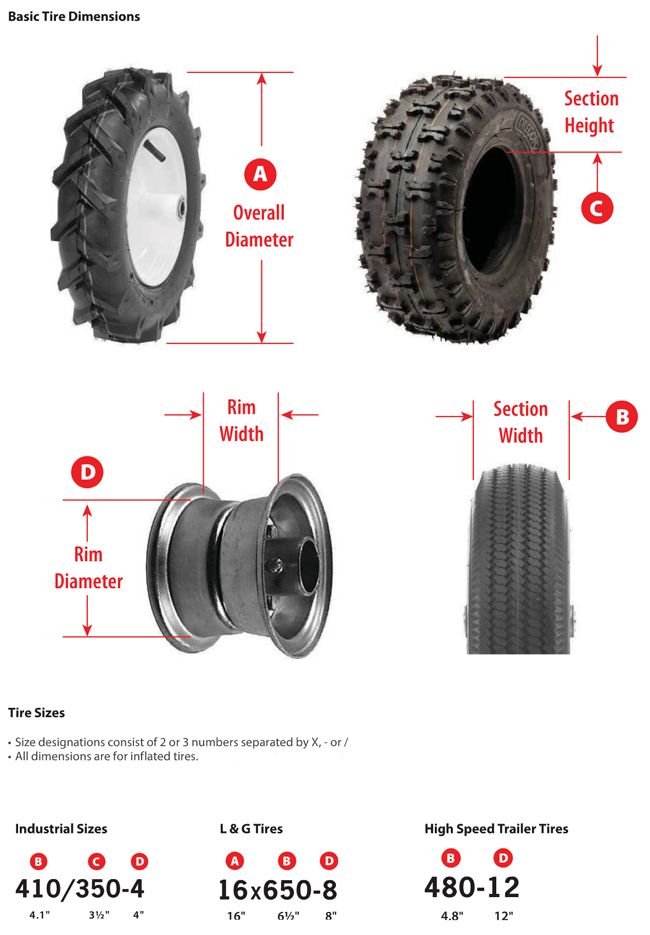
For most vehicles, you'll see the letter "P" before the number sequence begins: P225/70R16 91S. The "P" is short for "P-metric," which is a designation by the Tire and Rim Association for a "passenger car" tire type. A "P" signifies the tire was designed to primarily be used on passenger vehicles, which can include cars, minivans, SUV's and other light-duty pickup trucks.
If you see "LT" instead of "P," it's because you need "light truck" tires – "LT" is short for "LT-metric," which is a designation by the Tire and Rim Association for a "light truck" type tire. Light truck tires are designed to be used on vehicles capable of carrying heavy cargo or pulling trailers.
Similarly, "T" stands for "temporary" and is for your spare tire. If you see "ST," that means "special trailer." A special trailer tire is never installed on the drive or steer wheels. It's only intended for use on trailer axles.
The first number to appear in your tire size information is the width, in millimeters, of the correct tires for your vehicle: P225/70R16 91S.
Tire width always refers to the measurement from one sidewall to another. Thus, a tire with the measurement "P225" is for a passenger vehicle and has a nominal width of 225 millimeters.
After the slash mark, the next number you see is for the tire's aspect ratio, which essentially tells you how tall your tire's profile is: P225/70R16 91S. Aspect ratios are delivered in percentages. Tire makers calculate the aspect ratio by dividing a tire's sidewall height by its width. If a tire has an aspect ratio of 70, it means the tire's height is 70% of its width.
Lower aspect ratio tires, such as a 60 series, generally offer vehicle handling performance advantages over higher aspect ratio tires, such as a 75 series.
After the aspect ratio comes a letter to indicate the tire's construction: P225/70R16 91S. "R" refers to the internal structure of your tire and gives you a general idea of its stability.
There are two types of construction that you may see on the sidewall of a tire
"Bias-ply" tires were used on automobiles and light trucks until the '70s," reports the classic car site, Hemmings. But radial tires represent the vast majority of tires on the road in the United States today. In fact, you will almost always see the letter "R" on tires as radial tires have been the industry standard for over 40 years. Radial construction means the tire's internal ply cords are oriented in a radial direction (at 90 degrees to the centerline of the tread).
But radial tires represent the vast majority of tires on the road in the United States today. In fact, you will almost always see the letter "R" on tires as radial tires have been the industry standard for over 40 years. Radial construction means the tire's internal ply cords are oriented in a radial direction (at 90 degrees to the centerline of the tread).
The next number is the wheel’s diameter. For example, a tire with the P225/70R16 91S would fit a rim with a 16-inch diameter.
Take note: if you decide to change your rims' size, you will also need to get new tires that are compatible with the change in size. Tires designed to fit a 16-inch wheel diameter will not stretch to fit on new 18-inch rims.
View Other Common Diameter Sizes:
14-Inch Diameter Tires
15-Inch Diameter Tires
17-Inch Diameter Tires
18-Inch Diameter Tires
19-Inch Diameter Tires
20-Inch Diameter Tires
21-Inch Diameter Tires
22-Inch Diameter Tires
The next figure needed to read tire size numbers is your tire's load index.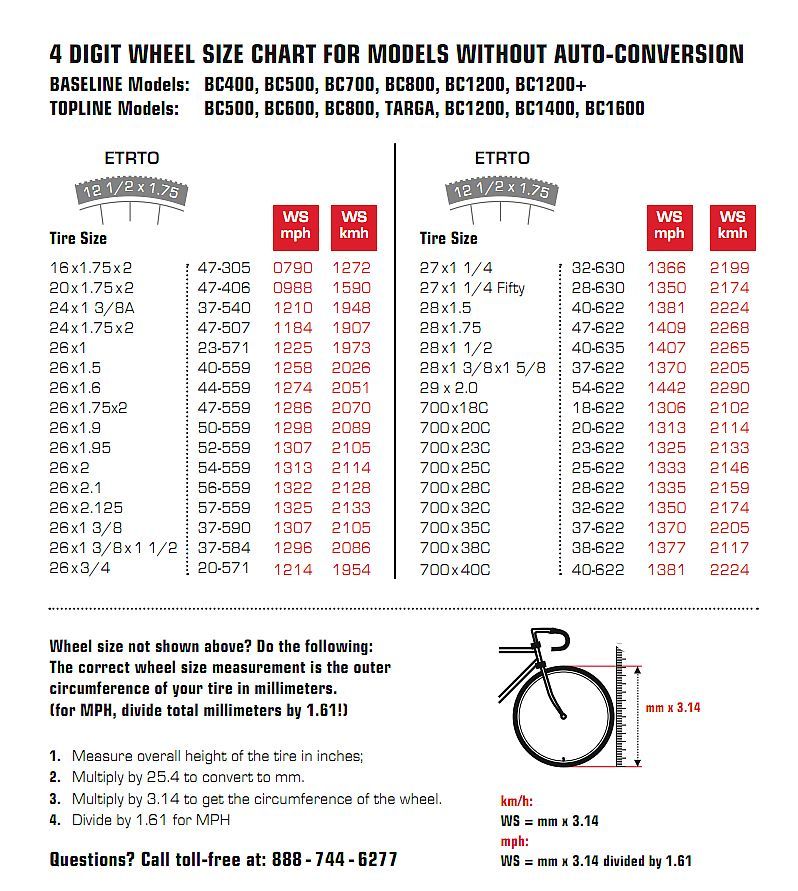 The load index tells us how much weight, in pounds, the tire can support when fully inflated: P225/70R16 91S.
The load index tells us how much weight, in pounds, the tire can support when fully inflated: P225/70R16 91S.
It is called the load "index" because the figure doesn't tell us the precise number of pounds the tire can support, at least not by itself. Instead, the number corresponds to a specific load capacity listed in an index. Beginning with one and ending with 150, numbers in the load index represent carrying capacities of 99 to 7385 lbs.
Additionally, you may not find this number present on all tires. This is because the load index is not required by law to be printed on tires. If there is no load index measurement on your tires, check the owner's manual or contact your local Bridgestone tire dealer for more information.
The final figure in a tire size sequence is the speed rating indicated by a letter: P225/70R16 91S. Just as your load index number corresponds to a particular load, your speed rating letter corresponds to a specific speed capability based on a standardized laboratory test.
For example, a tire with a speed rating "S" is rated for up to 112 mph, while a tire rated "R" is up to 106 mph. Remember that this isn't a recommended cruising speed, but rather the maximum speed that tire type can withstand. Of course, you should always follow legal speed limits on roadways.
Here are the most common letters for speed ratings and their corresponding maximum speeds:
Tires with higher speed ratings tend to offer increased handling performance. Replacement tires must have the same or higher speed rating to maintain vehicle speed capability. If a vehicle has tires with different speed ratings, the speed rating of the "slowest" tire dictates the vehicle's top speed.
Like the load index, the speed rating is not required by law to be listed on all tires. If your tires do not have the speed rating listed, your owner's manual will have the relevant information for your model's stock tire type.
If your tires do not have the speed rating listed, your owner's manual will have the relevant information for your model's stock tire type.
You may find "M+S" or "M/S" after the main tire size sequence on some tires. This indicates that the tire has some capacity to handle snow and mud conditions. This indication is common on most radial or "R" type tires.
You may notice another set of letters and numbers on your tire's sidewall beginning with "DOT." This is not an indication of tire size, but rather that the tire complies with Federal Motor Vehicle Safety Standards. The "DOT" stands for Department of Transportation and is followed by the tire identification number.
The first two letters or numbers after DOT refer to the manufacturing plant where the tire was produced and the last four numbers indicate the week and year the tire was made. The numbers 4318, for instance, indicate that the tire was manufactured during the 43rd week of 2018.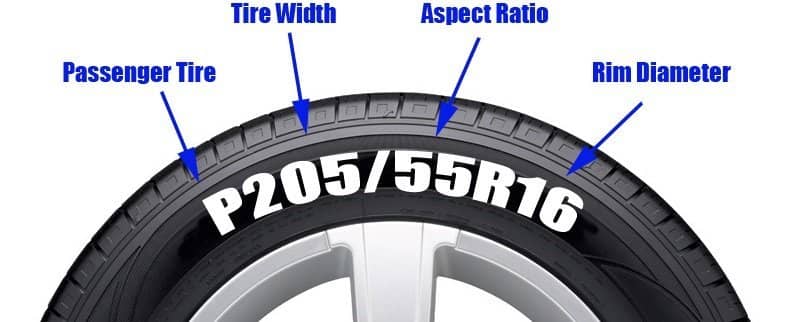
While it's certainly possible to upgrade your tires' size, it's usually best to stick to your manufacturer-recommended tire size for optimal performance. Increasing the size of your tires may give your car more ground clearance, but it may also affect handling, drivetrain performance and fuel economy. Keep in mind the changes to key figures mentioned above, such as load index and speed rating, and how they may affect your vehicle's capabilities if you decide to increase tire size.
Once you know how to read the numbers on tires, you can explore tires by size and narrow down your tire options quickly. Compare tire sizes online or visit a Bridgestone tire dealer near you for help.
Home > Company > Tire Safety > Choosing Tires > Determining Tire Size
Once you have determined it’s time to buy tires, you’ll need to know what size tires are correct for your vehicle.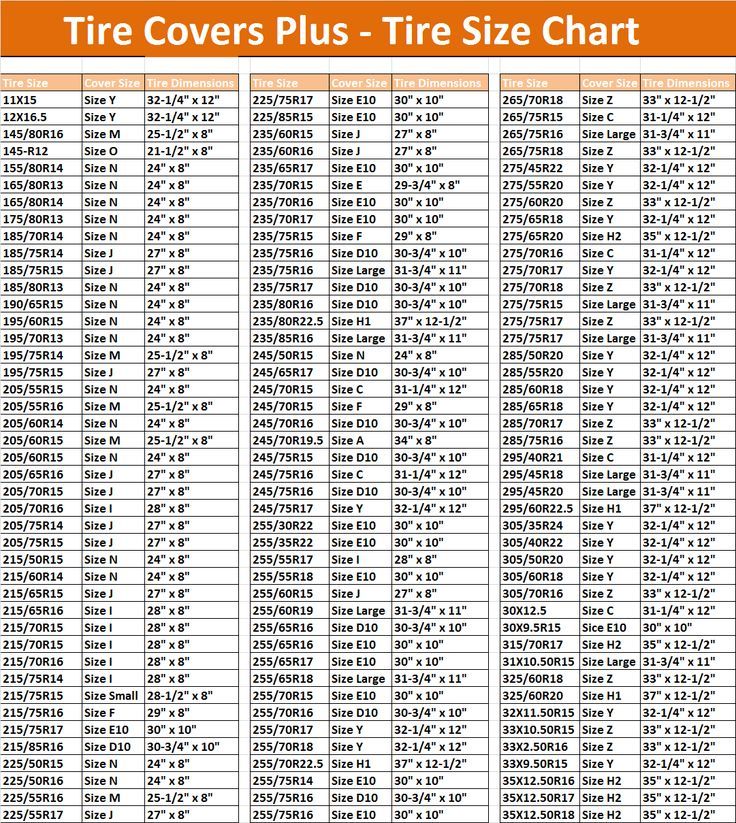 Depending on what you drive, you may be interested in how to find the right tire for your…
Depending on what you drive, you may be interested in how to find the right tire for your…
This information is usually inside your car’s doorjamb, in your owner’s manual. To ensure your current tire or a replacement tire you may be looking at matches your vehicle’s requirements, it will be good for you to understand how tire sizing works. You may have never paid attention to the string of numbers and letters on every tire, but it’s a gold mine of information.
If you’re unsure of how to read tire measurements from your tire walls, the information and graphics below will tell you how to read tire size, understand and interpret it. If you decide you want to substitute a new size or tire type, consult an authorized tire retailer who can expertly advise you, because many optional tire sizes may have different load capacities and could require wheels of a different rim width or diameter and different inflation pressure.
Not sure you need new tires? Our Tire Replacement Guidance article will help you determine whether it’s time to retire your tires.
Most passenger cars, SUVs and light pickups (1/2 ton and smaller) will come with tires that are either P-Metric or Euro-Metric. For P-Metric tires, you’ll see the letter “P” before the number sequence begins: P225/70R16 97H. P-metric is a designation standardized by the Tire and Rim Association for a “passenger car” tire type. For Euro-Metric there will be no preceding letter before the number sequence begins: 225/70R16 98H. Euro-Metric is a designation standardized by the European Tyre and Rim Technical Organization for a “passenger car” tire type. Both P-Metric and Euro-Metric size tires are designed to primarily be used on passenger vehicles, which can include cars, minivans, SUVs, and other light duty pickup trucks.
If your vehicle is an SUV, Pickup truck or van, you might see a different type of size designation on your placard that is specific for heavy duty light trucks and vans, especially common on ¾ ton and larger pickup trucks and vans.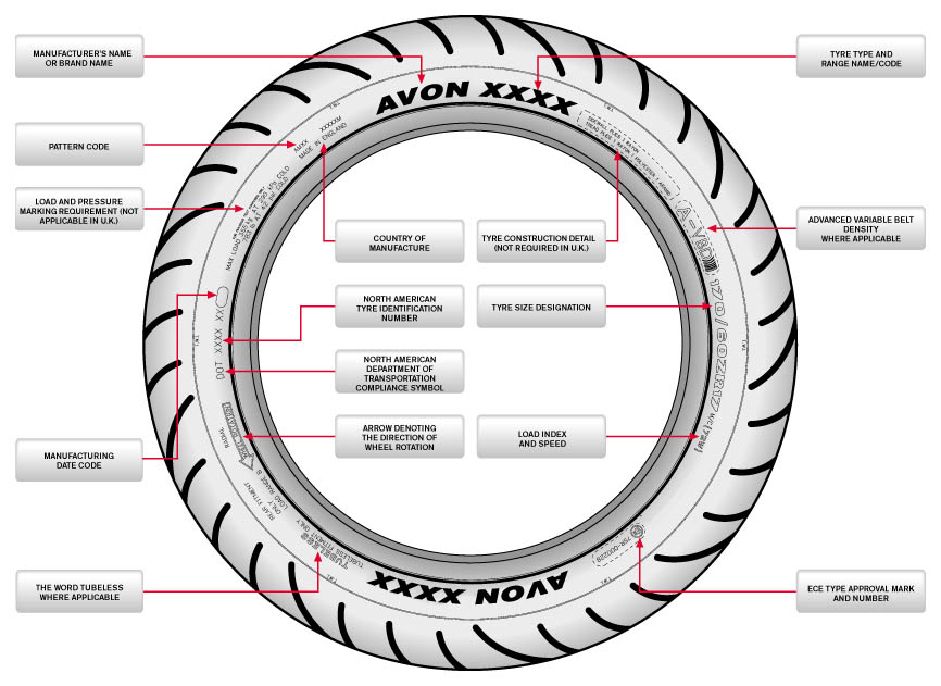 There are two common size types in this category, LT-Metric and Euro-Metric Commercial (aka C-type). Both size types are metric and so use the same structure as P-Metric and Euro-Metric but have some different characters in the size that differentiate them from their passenger car cousins. LT-Metric tires will have the letters “LT” before the size number sequence: LT245/75R17 119/116R Load Range E. Notice that there are two load index numbers and a Load Range, see the section on Load Index for more info. LT-Metric is a designation standardized by the Tire and Rim Association for a “light truck” type tire. Euro-Metric Commercial or C-Type tires will look very similar to a passenger Euro-Metric size except that there will be a “C” right after the rim size: 23/65R16C 121/119R. Notice that the C-type tires also have two load index numbers. Euro-Metric Commercial, or C-Type is a designation standardized by the European Tyre and Rim Technical Organization for a light truck type tire. Light truck tires are designed to be used on vehicles capable of carrying heavy cargo and are usually only specified by a vehicle manufacturer on vehicles exceeding a certain load capacity.
There are two common size types in this category, LT-Metric and Euro-Metric Commercial (aka C-type). Both size types are metric and so use the same structure as P-Metric and Euro-Metric but have some different characters in the size that differentiate them from their passenger car cousins. LT-Metric tires will have the letters “LT” before the size number sequence: LT245/75R17 119/116R Load Range E. Notice that there are two load index numbers and a Load Range, see the section on Load Index for more info. LT-Metric is a designation standardized by the Tire and Rim Association for a “light truck” type tire. Euro-Metric Commercial or C-Type tires will look very similar to a passenger Euro-Metric size except that there will be a “C” right after the rim size: 23/65R16C 121/119R. Notice that the C-type tires also have two load index numbers. Euro-Metric Commercial, or C-Type is a designation standardized by the European Tyre and Rim Technical Organization for a light truck type tire. Light truck tires are designed to be used on vehicles capable of carrying heavy cargo and are usually only specified by a vehicle manufacturer on vehicles exceeding a certain load capacity.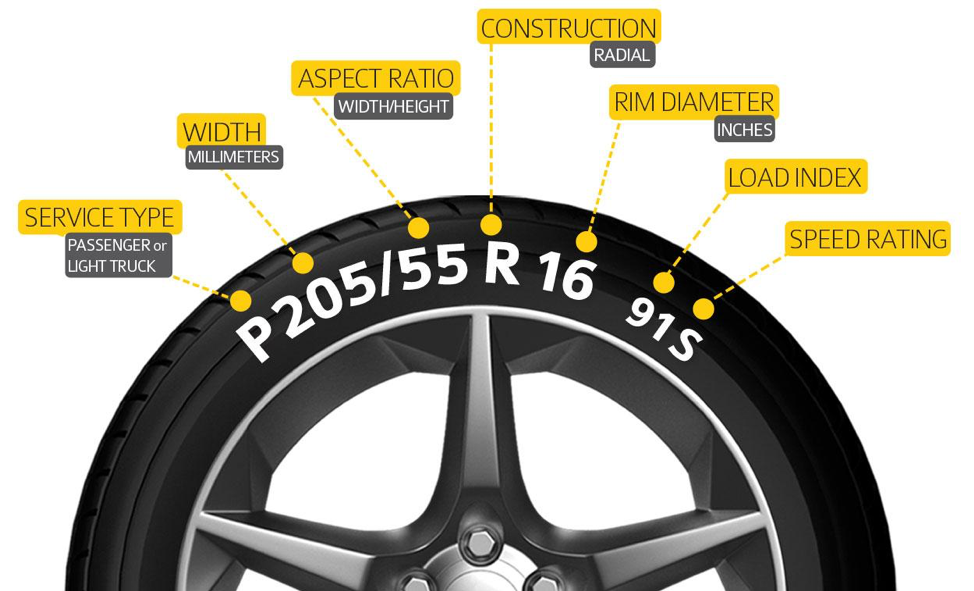
Other types of tires that fall into the Metric sizing type are Temporary Spares, they start with “T”. If you see a size that starts with “ST,” that means “special trailer” and is only for use on a trailer.
Regardless of whether you are looking at a P-Metric, Euro-Metric, LT-Metric, Euro-Metric Commercial, T or ST tire the numbers in the size mean the same thing.
The first number to appear in your tire size information is the width, in millimeters, of the correct tires for your vehicle: P225/70R16 91S.
Tire width always refers to the measurement from one sidewall to another. Thus, a tire with the measurement “P225” is for a passenger vehicle and has a nominal width of 225 millimeters.
After the slash mark, the next number you see is for the tire’s aspect ratio, which essentially tells you how tall your tire’s profile is: P225/70R16 91S. Aspect ratios are delivered in percentages. Tire makers calculate the aspect ratio by dividing a tire’s height off the rim by its width. If a tire has an aspect ratio of 70, it means the tire’s height is 70% of its width.
Aspect ratios are delivered in percentages. Tire makers calculate the aspect ratio by dividing a tire’s height off the rim by its width. If a tire has an aspect ratio of 70, it means the tire’s height is 70% of its width.
Lower aspect ratio tires, such as a 60 series, generally offer vehicle handling performance advantages over higher aspect ratio tires, such as a 75 series, but a typical trade off can be ride harshness.
After the aspect ratio comes a letter that indicates the type of internal construction maintaining your tire’s stability: P225/70R16 91S.
There are two types of construction that you may see on the sidewall of a tire:
Radial tires are the most common tires on the road in the United States today; thus “R” will usually be shown in the tire size designation. Radial construction means the tire’s internal ply cords are oriented in a radial direction, from one bead over to the other, essentially perpendicular to the direction of rotation. You may also occasionally see RF indicating a run flat tire or ZR indicating a tire that is a speed rating higher than V.
You may also occasionally see RF indicating a run flat tire or ZR indicating a tire that is a speed rating higher than V.
The next number is the diameter code, in inches, of the rim onto which the tire can be mounted. For example, a tire with the P225/70R16 91S would fit a rim with a 16-inch diameter.
Load index can be a confusing subject because there are so many different caveats, but we will try to explain everything here.
The next figure after the rim size in the sequence is your tire’s load index, which tells us how much weight, in pounds, the tire can support when fully inflated: P225/70R16 91S
We call it the load “index” because the number doesn’t tell us the precise number of pounds the tire can carry, at least not by itself. However, the number does correspond to a specific load capacity listed in an index. Beginning with 1 and ending with 150, numbers in the load index represent carrying capacities of 99 to 7385 lbs.
Beginning with 1 and ending with 150, numbers in the load index represent carrying capacities of 99 to 7385 lbs.
There are two types of load types for passenger tires though, Standard Load and Extra Load. If a tire is Standard Load there will be no markings indicating it but if it is Extra Load the letters XL will appear after the size and load index.
Standard Load Euro-Metric: 215/55R17 94V
Extra Load Euro-Metric: 215/55R17 98V XL
Passenger car tires like P-Metric and Euro-Metric will only have one load index number where LT-Metric and Euro-Metric Commercial (C-Type) will have two numbers separated by a slash. The first number is the load index if the tire is used in a single application, the second number is the load index if the tire is used in a dual application. Passenger type tires cannot be used in a dual application. Light truck tires will also have a Load Range that is indicated by a letter, such as Load Range E. Load Range is an older term that is still commonly used in the industry so you may hear your tire dealer reference it but the load index numbers are the best way to ensure you have the proper tire.
One important but often misunderstood facet about load index is that the load index numbers between standards organizations (P-Metric vs Euro-Metric) are not necessarily on the same scale. Meaning that two tires in the two different systems that have the same load index number could have different maximum load capacities. This is why it’s important to not only look at the load index number but also verify the actual load capacity.
The final figure in a tire size sequence is the speed rating, which is indicated by a letter: P225/70R16 91S. Just as your load index number corresponds to a specific load, your speed rating letter corresponds to a particular speed capability based on a standardized laboratory test.
For example, a tire with speed rating “S” is rated for up to 112 mph, while a tire rated “R” is up to 106 mph. Remember that this isn’t a recommended cruising speed. Of course, you should always follow legal speed limits on roadways.
Replacement tires must have the same or higher speed rating as the vehicle’s Original Equipment to maintain vehicle speed capability. If a vehicle has tires with different speed ratings, it is the speed rating of the “slowest” tire that dictates the vehicle top speed.
There is one last sizing type that you should know about, especially if you are in the market for off road tires for a light truck or SUV. It’s called a Flotation size and the numbers in this sizing format are very different from the Metric formats. Flotation sized tires are similar to LT-Metric tires in application except for a few important points. Number one, they cannot be used in dual applications and number two, an equivalent size tire may have different load capacity than its LT-Metric counterpart.
The first number in the Flotation tire size is the overall diameter in inches. Pretty straight forward.
Pretty straight forward.
The second number is the section width (sidewall to sidewall) measurement in inches. Again, fairly simple.
After the section width comes a letter that indicates the type of internal construction: 33X12.50R17LT 120Q.
This is the same as is found in the metric sizing systems.
There are two types of construction that you may see on the sidewall of a tire:
Radial tires are the most common tires on the road in the United States today; thus “R” will usually be shown in the tire size designation. Radial construction means the tire’s internal ply cords are oriented in a radial direction, from one bead over to the other, essentially perpendicular to the direction of rotation.
The next number is the diameter code, in inches, of the rim onto which the tire can be mounted.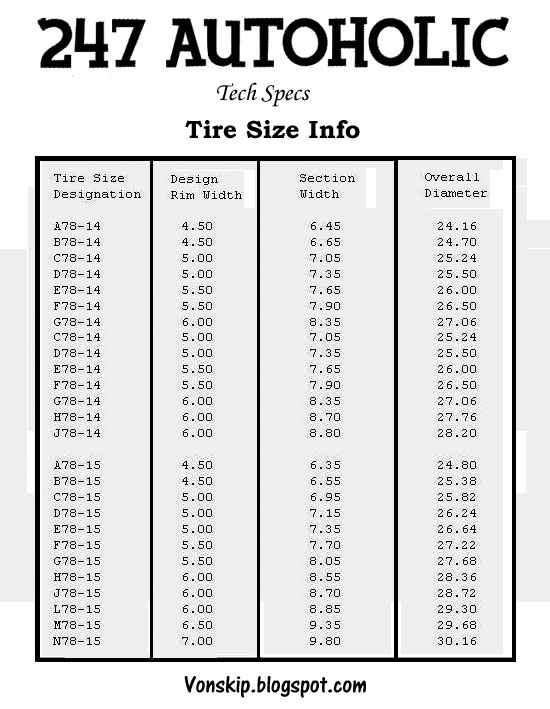 For example, a tire with the 33X12.50R17LT 120Q would fit a rim with a 17-inch diameter.
For example, a tire with the 33X12.50R17LT 120Q would fit a rim with a 17-inch diameter.
The letters LT will be after the Rim Diameter indicating that this tire type is intended for Light Truck vehicles similar to the LT-Metric and Euro-Metric Commercial (C-Type) tires.
Load Index and Speed Rating have the same meaning and format as the tires using the metric sizing system. Note that since flotation tires cannot be used in a dual application there will be only one load index number instead of two.
Another group of stamping on certain types of tires is the Uniform Tire Quality Grading or UTQG. This grading and stamping is required for passenger car tires (i.e. P-metric and Euro-metric) in the all season and summer categories. Dedicated winter tires, Light Truck (LT-Metric, Euro-Metric Commercial, Flotation) and Motorcycle tires are excluded from this requirement.
Dedicated winter tires, Light Truck (LT-Metric, Euro-Metric Commercial, Flotation) and Motorcycle tires are excluded from this requirement.
Quality grading is designed to make the tire purchase decision easier for you. Ideally, the system is intended to provide simple, comparative data so you can make an intelligent buying decision. However, the ratings are based upon test results achieved under special conditions. This means it’s possible to misinterpret the comparative data as it relates to your individual driving habits, conditions, etc. You should still rely on your service or tire professional for assistance.
Quality grading designates the comparative performance levels of a tire based on government-specified tests but commissioned by the individual tire manufacturers. All tire manufacturers are required to grade regular and all-season passenger tires in three categories:
UTQG
Treadwear
The treadwear grade is a comparative rating based on the wear rate of the tire when tested under controlled conditions on a specified government test course for 6,000 miles (9,600 km).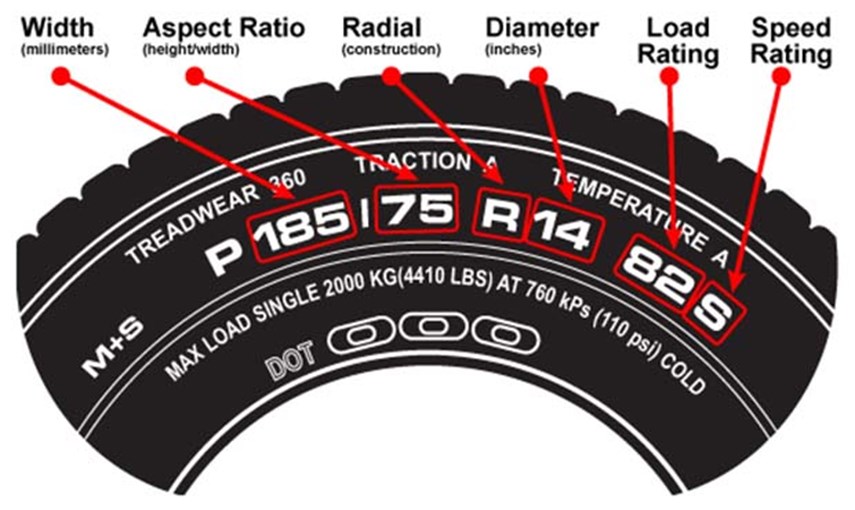 For example, a tire graded 150 would wear one and a half times as well on the government course as a tire graded 100. However actual tire performance depends on driving habits, road characteristics, service practices, and other factors that can influence the outcome.
For example, a tire graded 150 would wear one and a half times as well on the government course as a tire graded 100. However actual tire performance depends on driving habits, road characteristics, service practices, and other factors that can influence the outcome.
Traction Grades AA, A, B and C
The traction grades from highest to lowest are AA (the highest), A, B and C. They represent how well tires stop on wet pavement as measured under controlled conditions on specified government test surfaces of asphalt and concrete. C-rated tires will have the lowest traction performance.
WARNING: THE TRACTION GRADE ASSIGNED IS BASED ON A WET BRAKING (STRAIGHT AHEAD) TRACTION TEST AND DOES NOT INCLUDE CORNERING (TURNING) TRACTION.
Temperature Grades A, B and C
The temperature grades A, B, and C represent the tire's resistance to the generation of heat and its ability to dissipate heat when tested under controlled conditions on a specified indoor laboratory test wheel. Sustained high temperature can cause the tire’s material to degenerate and reduce tire life, and excessive temperature can lead to sudden tire failure. The grade C corresponds to a performance level all passenger car tires must meet under the Federal Motor Vehicle Safety Standard No. 109. Grades A and B represent higher levels of performance on the laboratory test wheel than the minimum required by law.
Sustained high temperature can cause the tire’s material to degenerate and reduce tire life, and excessive temperature can lead to sudden tire failure. The grade C corresponds to a performance level all passenger car tires must meet under the Federal Motor Vehicle Safety Standard No. 109. Grades A and B represent higher levels of performance on the laboratory test wheel than the minimum required by law.
WARNING: THE TEMPERATURE GRADE IS ESTABLISHED FOR A TIRE THAT IS PROPERLY INFLATED AND NOT OVERLOADED. EXCESSIVE SPEED, UNDER INFLATION, OR EXCESSIVE LOADING, EITHER SEPARATELY OR IN COMBINATION, CAN CAUSE HEAT BUILDUP AND POSSIBLE TIRE FAILURE.
DOT Quality Grades
All passenger car tires must conform to other federal requirements in addition to these grades.
Learn about our mission, our achievements, and our ongoing commitments
Read Our Origin Story
There are more inscriptions and drawings on the sidewall of any tire than there is free space.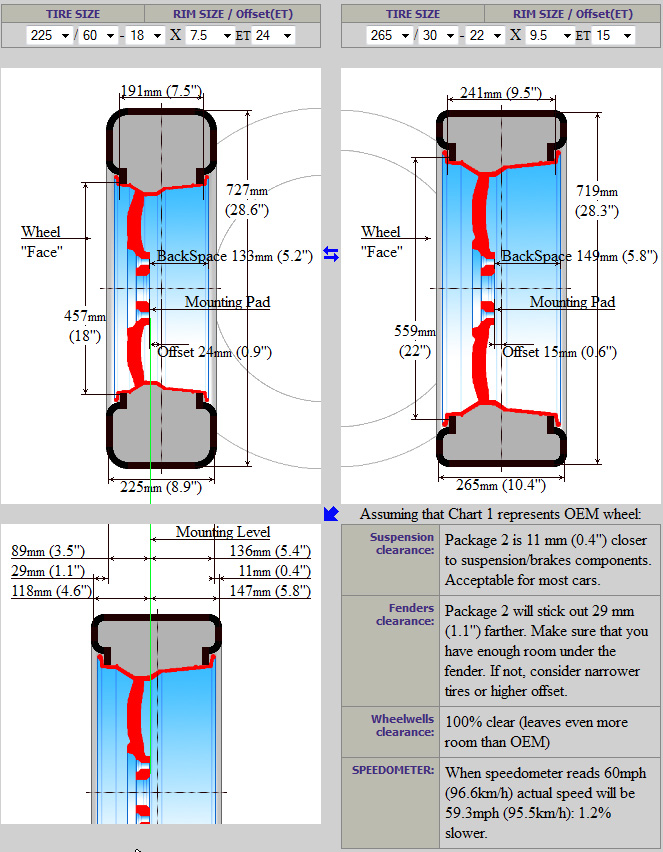 Each icon has its own function, but it is not always possible to reveal its ins and outs without a hint. In addition, a completely new marking has appeared this year.
Each icon has its own function, but it is not always possible to reveal its ins and outs without a hint. In addition, a completely new marking has appeared this year.
The tire's make and model are usually printed in the largest font. It is understandable: this is what the buyer pecks at. It is interesting that the same data in encrypted form is also on the protector - in the form of thin colored stripes. They are needed in order to be able to identify the rubber lying in the warehouse, because only its working surface is in the field of view of the workers.
Tire size is a mystery for many. It seems that there are no problems in everyday life: what numbers are indicated on the sidewall of a standard tire, with such you need to buy a winter or summer one to replace a worn one. But what exactly do they mean? For example, let's take the index 225/50 R17 98 N on the Continental tire.
Continental PremiumContact 6
Continental PremiumContact 6
Additional characters may be assigned to the tire model name.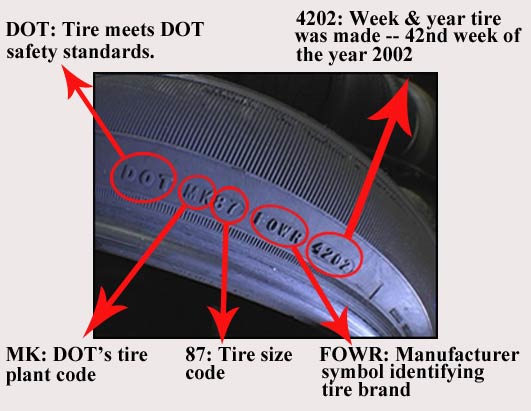 For example, SUV means focusing on crossovers and SUVs (reinforced sidewall, large load capacity), C - on commercial vehicles (from the English cargo, "cargo"). It happens that a tire is welded specifically for a particular auto concern and is intended for primary assembly on a conveyor or sale through its official dealers. So, at Continental, the indices A0 and R01 are reserved for Audi, J for Jaguar, N0, N1, N2 for Porsche, M0, M01 for Mercedes.
For example, SUV means focusing on crossovers and SUVs (reinforced sidewall, large load capacity), C - on commercial vehicles (from the English cargo, "cargo"). It happens that a tire is welded specifically for a particular auto concern and is intended for primary assembly on a conveyor or sale through its official dealers. So, at Continental, the indices A0 and R01 are reserved for Audi, J for Jaguar, N0, N1, N2 for Porsche, M0, M01 for Mercedes.
Related materials
7 main principles for choosing summer tires
Summer tires do not carry any additional markings. The letters M + S from the English Mud, “mud”, and Snow, “snow”, are on tires that are basically suitable for cold climates, but are not purely winter. The latter are indicated only by the snowflake and mountain peak icon. The inscription All season (or the abbreviation AS), we think, does not need to be translated. On top-level tires, you can find an image of an umbrella. This is an indication of excellent performance on wet pavement.
This is an indication of excellent performance on wet pavement.
Often, information about the maximum load and maximum pressure is put on the tire in plain text, without allegorical codes and pictograms. Look for the phrases Max load and Max pressure respectively.
Tires with reinforced sidewalls are gaining popularity around the world, allowing you to drive several tens of kilometers after losing pressure. Usually they simply write Run Flat, although there are also original designations. So, the Continental concern puts the SSR marking on puncture-resistant models.
European tire company websites list rubber labels for noise, efficiency and environmental friendliness. The first is indicated by a number from 1 (quiet) to 3 (loud). Wet grip coefficient and fuel consumption coefficient is a letter from A (best) to G (worst). In Russia, such a classification is not yet applied.
One of the key parameters is the date of manufacture of the tire.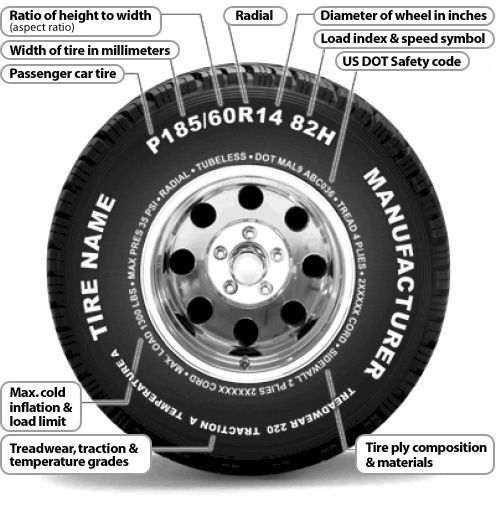 You should also look at it when buying a new set, not to mention a used one. It is not recommended to ride on tires for more than five or six years from the date of issue, although it is not prohibited either by law or by the manufacturers themselves. The date of manufacture is indicated by four digits in an oval. The first two are a week, the second two are a year. For example, 3119stands for "boil" of the 31st week of 2019.
You should also look at it when buying a new set, not to mention a used one. It is not recommended to ride on tires for more than five or six years from the date of issue, although it is not prohibited either by law or by the manufacturers themselves. The date of manufacture is indicated by four digits in an oval. The first two are a week, the second two are a year. For example, 3119stands for "boil" of the 31st week of 2019.
Related materials
The main mistakes when installing tires: follow the masters
When mounting asymmetric rubber on wheels, the words Outside (“outer side”) and Inside (“inner side”) will tell you the correct location. On the wheels installed on the car, the owner should see only the first inscription. If there are none on the tires, there are no outer and inner sides on the tread, it is symmetrical in operation.
On both sides of the directional models, the word Rotation is mandatory. The arrow located next to it will tell you the direction of rotation of the wheel when the car moves forward.
The arrow located next to it will tell you the direction of rotation of the wheel when the car moves forward.
Continental tires are marked with TWI for critical tread wear marks. On summer models, they are supplemented by indicators with cross and drop marks. They signal that the rubber has not yet reached the minimum tread height, but it is no longer enough to feel confident in the rain.
And there are also VAI indicators on the tread. They are applied symmetrically in the left and right shoulder areas. With the correct installation of the wheel, they change as the rubber wears in exactly the same way. Discrepancies are a reason to visit the wheel alignment stand. So far, the technology is used only on truck tires.
Russia introduces mandatory tire labeling in order to combat "gray" deliveries. The unique Data Matrix code is highly secure and readable through several layers of packaging. It is declared that it cannot be faked or copied, and the information sewn into it is readable even if it is partially damaged. The code can be decrypted by each buyer. To do this, it must be scanned with a special mobile application "Honest Sign". After that, information about the manufacturer and importer, the characteristics of the product, the date of putting into circulation in Russia will be displayed on the screen of the gadget.
It is declared that it cannot be faked or copied, and the information sewn into it is readable even if it is partially damaged. The code can be decrypted by each buyer. To do this, it must be scanned with a special mobile application "Honest Sign". After that, information about the manufacturer and importer, the characteristics of the product, the date of putting into circulation in Russia will be displayed on the screen of the gadget.
Compulsory marking introduced from November 1, 2020. From this day on, production, import to Russia and purchase from manufacturers and importers of rubber without marks of the established sample are prohibited. Since December 15, the entire circulation of non-marking tires has been banned. Warehouse balances were allowed to be tagged until March 1, 2021.
Mandatory marking introduced from November 1, 2020. From this day on, production, import to Russia and purchase from manufacturers and importers of rubber without marks of the established sample are prohibited. Since December 15, the entire circulation of non-marking tires has been banned. Warehouse balances were allowed to be tagged until March 1, 2021.
Since December 15, the entire circulation of non-marking tires has been banned. Warehouse balances were allowed to be tagged until March 1, 2021.
Continental has been at the forefront of technology testing in Russia and is fully prepared for its implementation. During 2019, together with hundreds of other companies from different industries in our country, he generated thousands of codes, working out the system. Moreover, on a global scale, the company has already prepared solutions for integrating electronic chips into tires, which allow monitoring their condition, including the degree of wear.
| 86 | 530 | 96 | 710 | ||||||
| 77 | 412 | 87 | 545 | 97 | 730 | ||||
78 | 560 | 98 | 750 | ||||||
| 79 | 437 | 89 | 580 | 99 | 775 | ||||
| 80 | 9009 50076 90 | 600 | 100 | 800 | |||||
| 81 | 462 | 91 | 615 | 101 | 825 | ||||
| 820003 | 92 | 630 | 102 | 850 | |||||
| 83 | 487 | 93 | 650 | 103 | 8750002 500 | 94 | 670 | 104 | 900 |
| 85 | 515 | 95 | 690 |
| Speed index | Q | R | S | T | H | V | W | Y | VR | ZR | ZR (Y) ZR (Y)0561 Photo: Continental Badges and letters on tires: deciphering all the symbols! There are more writing and graphics on the sidewall of any tire than there is free space. Each icon has its own function, but it is not always possible to reveal its ins and outs without a hint. In addition, a completely new marking has appeared this year.Badges and letters on tires: deciphering all the designations! Badges and letters on tires: deciphering all the designations! There are more writing and graphics on the sidewall of any tire than there is free space. Each icon has its own function, but it is not always possible to reveal its ins and outs without a hint. In addition, a completely new marking has appeared this year.Badges and letters on tires: deciphering all the designations! Our new video How we assembled the Evolute i-Joy (video) Grant with a new 120 horsepower engine: how does she drive? New version of Exeed LX: test and review Like this post? Subscribe and you will always be in the know! Driving in Zen News smi2. Rules for storing car tires without rimsWinter or summer tires must be stored in proper conditions between seasons - these requirements apply to both wheels for cars, and for buses and special equipment. It is important to choose branded products that are suitable for professional use and “forgive” some mistakes during storage. Many stores buy original agricultural tires in bulk, models from the VOTO manufacturer meet all quality standards. Sizes can be selected for discs, as well as seasonality and tread design features. Every car enthusiast should know the rules for storing tires - their observance to preserve the material and prevent deformation. There are no tricks here, it is important to comply with certain requirements and avoid mistakes that are often found even among experienced drivers.
Features of long-term storage of tires The main rule is that tires are stored in conditions close to operational ones. It is not always possible to comply with this rule, but you can adhere to the upper or lower limits of the norm for winter or summer models, respectively. We note general recommendations:
What mistakes are made during "preservation"?Storage must be correct, any violations of the rules declared by the manufacturer may change the geometry of the tires, lead to cracking of rubber or corrosion of metal parts. Some, to save space, hang the wheels on hooks and loops, which will inevitably ruin the product in a few months. In such cases, it is better to sacrifice the area, but not to spoil the “sneakers” of the car, which are not cheap. So, let's note the mistakes that are made when they do not know the rules of maintenance:
Violation of these rules leads to the fact that the products lose their properties, may crack, deform or crack. If you find such violations in yourself, immediately correct them by creating good conditions for the “preservation” of the wheels. |